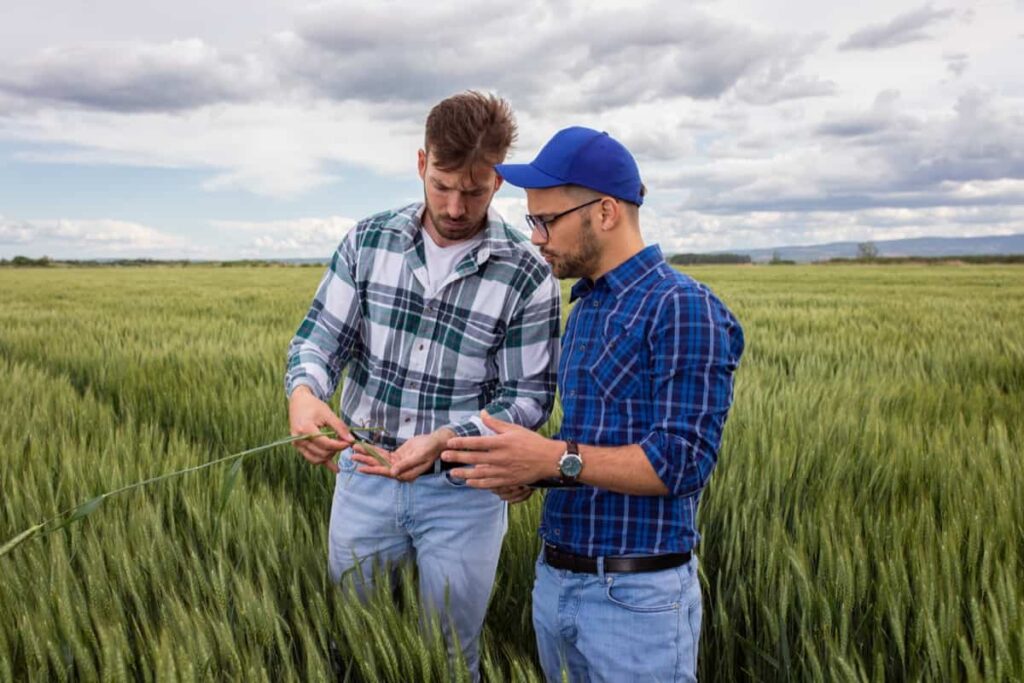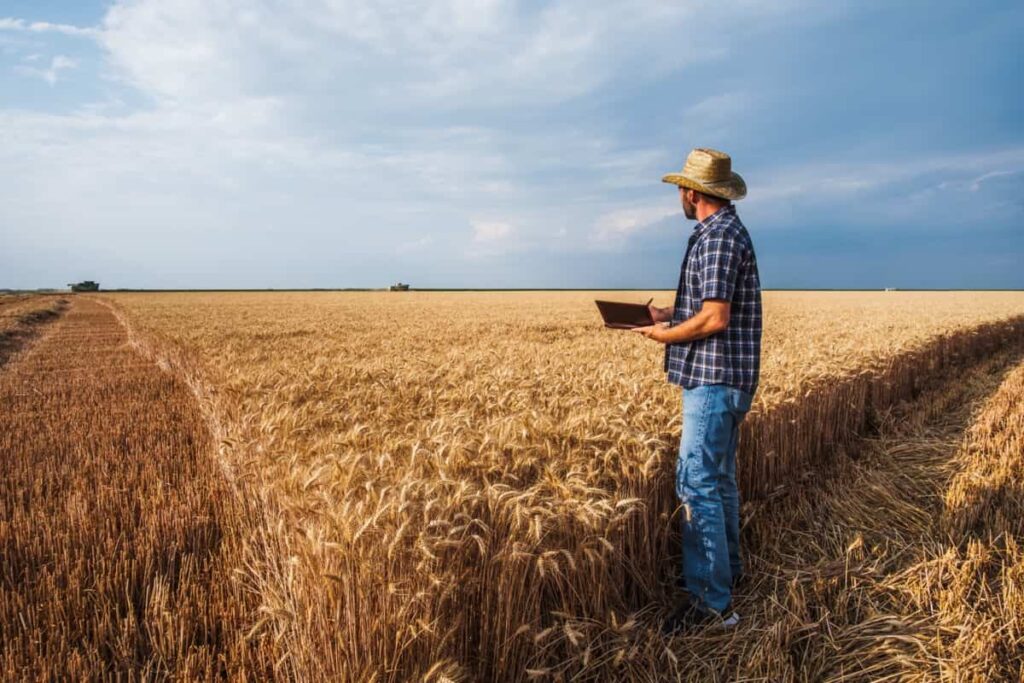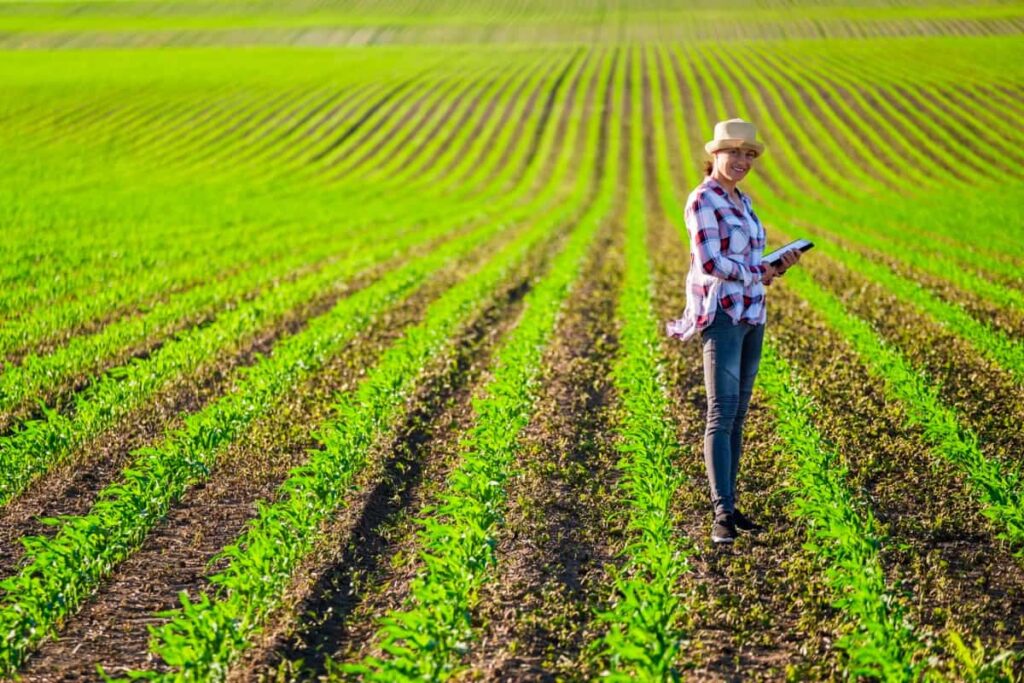Calculating the normalized differential vegetation index is the most widely used method for assessing the state of vegetation cover. It is used both in agriculture and for environmental monitoring. Despite its sensitivity to weathering and soil background distortions, it has become the most widespread vegetation index in crop monitoring.

This fact is connected to the simplicity and availability of NDVI formula calculation, which can be delivered by satellite and remote sensing data providers. The applications of the given index in precision farming systems are extensive, from crop mapping and crop health monitoring to growth monitoring and yield estimation. Thanks to NDVI, farmers can easily predict the yield of fields in advance.
What is NDVI and How Does it Work?
By regularly calculating the normalized differential vegetation index over a certain period, valuable insights can be gained about changes in the condition of plants, and the overall health of crops can be accessed remotely. A sudden decrease in NDVI values may signal a decline in plant health, but it’s essential to compare this index with other data to ensure accuracy. Proper interpretation of the values can assist agronomists in increasing yields, reducing fertilizer costs, and minimizing adverse environmental impact.
In case you missed it: 13 Different Ways to Improve Crop Yield for Maximum Profits

Plants have a chlorophyll pigment that absorbs visible light and reflects near-infrared light. When a plant is dehydrated or diseased, the spongy layer of its leaves breaks down, causing it to absorb more near-infrared light. By comparing the change in near-infrared light to red light, we can accurately determine the presence of chlorophyll, which is a good indicator of plant health.
Green plants absorb solar radiation in the photosynthetically active radiation (PAR) region, which is then used as an energy source in photosynthesis. Healthy green plants usually look dark in photosynthetically active radiation (PAR) but appear bright in the near-infrared. It contrasts clouds and snow, which are bright in red (like other visible wavelengths) but dark in the near-infrared.
The chlorophyll-pigmented leaves soak up visible light for photosynthesis, while the structure of the leaves reflects near-infrared light strongly. The amount of leaves a plant has can also affect how these wavelengths of light impact it. Early Earth observation instruments collected data in the visible and near-infrared spectrum, making it natural to use the differences in plant reflectivity to see where they are located in satellite images.
In case you missed it: Unlocking the Secrets of Optimal Fertilizer Requirements for Potato Crop

The NDVI is a measure that ranges from -1.0 to 1.0. Negative values typically indicate the presence of clouds, water, or snow, while values close to zero are often seen in areas with rocks or bare soil. NDVI values interpretation of 0.1 or less typically corresponds to empty areas with rocks, sand, or snow. Moderate values (0.2 to 0.3) usually indicate shrubs and grasslands, while high values (0.6 to 0.8) indicate temperate and tropical forests.
Benefits of NDVI for Crop Yield Maximization
NDVI has many advantages. By calculating this index, farmers can improve yields and detect diseases and pest attacks before widespread damage occurs. It can also help improve water management for plants. Growers can anticipate and prevent future plant stress problems. Indexes are commonly utilized to detect areas where plants are experiencing stress and exhibiting weaker growth.
It is important to note that they do not precisely diagnose the issue. The farmer and agronomist should analyze the data and compare various areas to establish the problem. With this information, we can identify the regions where the plants are under stress and focus on detecting them. Agriculture requires carefully managing resources, including fertilizers, pesticides, labor, and machinery.
In case you missed it: Cauliflower Insect Pest Management: Effective Tips for Protecting Your Crop

NDVI agriculture data helps farmers make informed decisions about allocating these resources, ensuring they are used effectively. Farmers can enhance the health and productivity of their crops by identifying areas that need more attention or resources. It helps to reduce production costs and minimize environmental impact, ultimately promoting the sustainability of agriculture.
EOSDA Crop Monitoring, developed by EOS Data Analytics, a reliable satellite imagery analytics provider, is a powerful tool for remote crop monitoring using NDVI. Users need to input their fields into the system and configure their NDVI settings to start receiving notifications. EOSDA Crop Monitoring helps to track the NDVI changes in each field during the season. The system enables users to monitor crop rotation patterns and stay updated on the current vegetation rates.
Challenges and Limitations of NDVI
NDVI is a valuable tool for assessing vegetation health and productivity. However, it has limitations to consider. One limit is that it can be influenced by factors like soil moisture, atmospheric conditions, and topography, which may affect the accuracy of the NDVI values in reflecting the actual health of vegetation.
In case you missed it: Blockchain Technology in Agriculture: A Way to Future Sustainability and Role in Supply Chain

One of the drawbacks of using NDVI is that it cannot differentiate between various vegetation types. It can pose a challenge in areas with multiple vegetation types or where the vegetation changes periodically. Additionally, NDVI may not be capable of detecting minor changes in the vegetation’s condition that happen within a short duration. Although NDVI is often used as a yield indicator, more accurate measures are available.
While NDVI values strongly correlate with yield, other factors such as temperature, rainfall, and soil quality should also be considered. Even though NDVI has limitations, it is still a valuable tool for monitoring plant health and productivity, especially in agriculture. Researchers and farmers can better understand crop health by using it alongside other data sources. It helps to make more informed decisions about crop management.
In case you missed it: Inexpensive Raised Bed Garden Ideas: Cheap Budget Tips and Techniques

Conclusion
The implementation of NDVI in agriculture has revolutionized the industry by providing numerous advantages such as higher crop yields, decreased water consumption, early identification of pests and diseases, and improved resource management. These benefits make NDVI a crucial tool in modern farming practices. When farmers incorporate NDVI technology into their processes, they can enhance their productivity and support the growth of sustainable and eco-friendly agriculture for generations to come.
- Profitable Village Farming Business Ideas in 2024
- High-Yield Aquaculture: Fast-Growing Fish for Farming
- Effective Fish Pond Construction Techniques for Beginners
- Irrigation and Water Management in Pineapple Farming
- Blossom to Harvest: Mastering Flowering and Pollination in Papaya Farming
- Pig Fattening Essentials: From Selection to Sale for Beginners
- Raising Wagyu Cattle: A Complete Guide for Premium Beef Production
- Soil Types and Their Water Holding Capacity
- Optimizing Irrigation Schedules for Coconut Groves for Enhanced Yield
- Espresso Your Garden: Coffee Grounds for Healthier Acid-Loving Plants
- The Best Soil Mix for Snake Plants: How to Mix Your Own Snake Plant Soil
- Green Thumb Success: Expert Tips for Cultivating Greenhouse Beans All Year Round
- Bloom All Year Round: The Ultimate Guide to Indoor Hyacinth Care
- Eco-Friendly Gardening: How to Make Liquid Fertilizer from Kitchen Waste
- Ultimate Guide to Grow Anise in Pots: Explore Seed Propagation to Harvesting
- Guide to Raising Chester White Pigs: Discover Breed Facts to Growth Management
- Mastering the Elegance: The Ultimate Guide to Weeping Cherry Tree Care, Planting, and Maintenance
- Ultimate Guide to Planting Garlic in Grow Bags: Growing Strategies for Beginners
- How to Fix Spider Plant Leaf-Related Problems: Natural and Organic Remedies
- 10 Reasons Why Your Tulsi Plant is Shedding Leaves: Home Remedies and Solutions
- Optimizing Growth and Yield: The Advantages of Palm Bunch Ash Fertilizer
- Utilizing Neem Oil Extract as a Natural Pesticide for Hydrangea
- From Soil to Harvest: Various Ways in Which Farmers Can Use AI Tools
- Steps to Encourage and Induce Citrus Flowers: A Comprehensive Guide
- How to Fix Snake Plant Leaf-Related Issues: Natural and Organic Remedies
- Transform Your Garden into a Fragrant Oasis with Raat Ki Rani (Night Blooming Jasmine)
- Discover the Ideal Chicken Breeds for Philippine Farms
- How to Create a Poultry Egg Farm Business Plan for Profits
- Grow Lemon Cucumbers Like a Pro: Insider Techniques for Bountiful Yields
- Ultimate Guide to Caring for Your Pink Princess Philodendron: Tips for Thriving Variegation
- Areca Nut Profit Per Acre: Calculating Yield and Cost of Cultivation
- How Kaveri Chicken is Becoming a More Profitable Breed in Indian Backyards
- Transform Your Barn: 9 Steps to Convert a Horse Stall into a Chicken Coop
- Exploring Suffolk Sheep Disadvantages with Limitations and Challenges
- Guide to Solving Potted Lemon Tree Problems: How to Revive Lemon Tree in Containers
- Steps to Encourage Female Pumpkin Flowers: Best Strategies for More Flowers and High Yields
